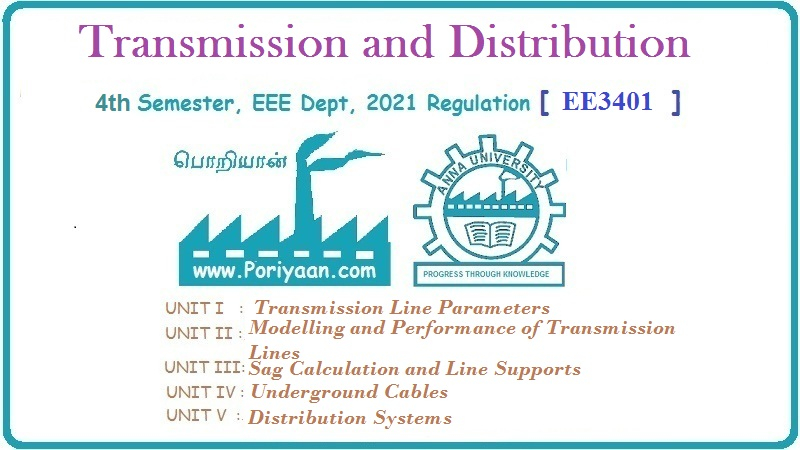Transmission and Distribution: Unit V: (a) Distribution Systems
Most Economical Power Factor
Distribution Systems
Question : 1. Derive the expression for the most economical power factor.
Most Economical Power
Factor
It is known that power factor
improvement of the system load has number of advantages. The main advantage of
the power factor improvement is reduction in maximum kVA demand. Due to this,
consumer saves annually over the maximum demand charges. But for improvement in
the power factor, consumer requires power factor improvement apparatus. Thus
consumer has to make capital investment for such an apparatus. According to
depreciation and interest rate, consumer has to spend certain cost annually.
Hence net annual saving of consumer is difference between maximum demand charge
and annual cost on power factor improvement apparatus.
There exists a certain value of power
factor for which the net annual saving of the consumer is maximum such a power
factor is called most economical power factor.
Let consumer is operating at a power
factor of cos ϕ1 with a peak load of P kW and power factor is to be
improved to cos ϕ2.
Let x = Charge in per maximum kVA demand per annum
while y = Expenditure in kVAR per annum
on p.f. improvement
Consider the power triangle for the load
as shown in the Fig. 7.23.1.

Now from the power triangle we can
write,
KVA1 = P / cos ϕ 1
and
KVA2 = P / cos ϕ 2
Reduction in KVA demand = P / cos ϕ
1 - P / cos ϕ 2 kVA
As charge per maximum kVA demand per
annum is ₹ x we can write,
Annual saving in maximum demand charges,

Now size of the power factor improvement
device will be according to the reduction in kVAR required.
kVAR1 = P tan ϕ1
and kVAR2
= P tan ϕ2
Hence leading kVAR to be supplied by the
power factor improvement apparatus must be difference between kVAR1
and kVAR2
Leading kVAR supplied = P (P tan ϕ1
- P tan ϕ2)'
The expenditure per kVAR per annum is y
hence,
Annual cost on power factor improvement
= yP( tan ϕ1- tan ϕ2)
Hence net annual saving is,

The variable ϕ2 variable
which decides the new power factor. Hence for saving S to be maximum,

It can be observed that most economical
power factor depends on costs of maximum kVA demand and equipment but it is not
dependent on the original power factor cos ϕ1.
Example 7.23.1
A certain industrial load has maximum demand of 150 kW at 0.7 lagging. It is
charged at a rate of ? 50 per kVA per annum. The power factor improvement
device costs ? 100 per kVAR and total interest and depreciation rate is 10 %
per annum. Find the maximum economic limit for the power factor improvement.
Solution :
Original p.f. cos ϕ1 = 0.7
lagging
Maximum demand charges = x = 50 per
kVA/annum
Capital cost for p.f. improvement device
= 100 per kVAR
Expenditure on p.f. improvement device
per annum is,
y = Capital cost x Interest and
depreciation rate
= 100 × 10 / 100 = 10 per kVAR/annum
Most economical power factor is,

= 0.9797 lagging
Hence maximum economic limit for the
p.f. improvement is 0.9797 lagging.
Review Question
1. Derive the expression for the most economical power factor.
Transmission and Distribution: Unit V: (a) Distribution Systems : Tag: : Distribution Systems - Most Economical Power Factor
Related Topics
Related Subjects
Transmission and Distribution
EE3401 TD 4th Semester EEE Dept | 2021 Regulation | 4th Semester EEE Dept 2021 Regulation
